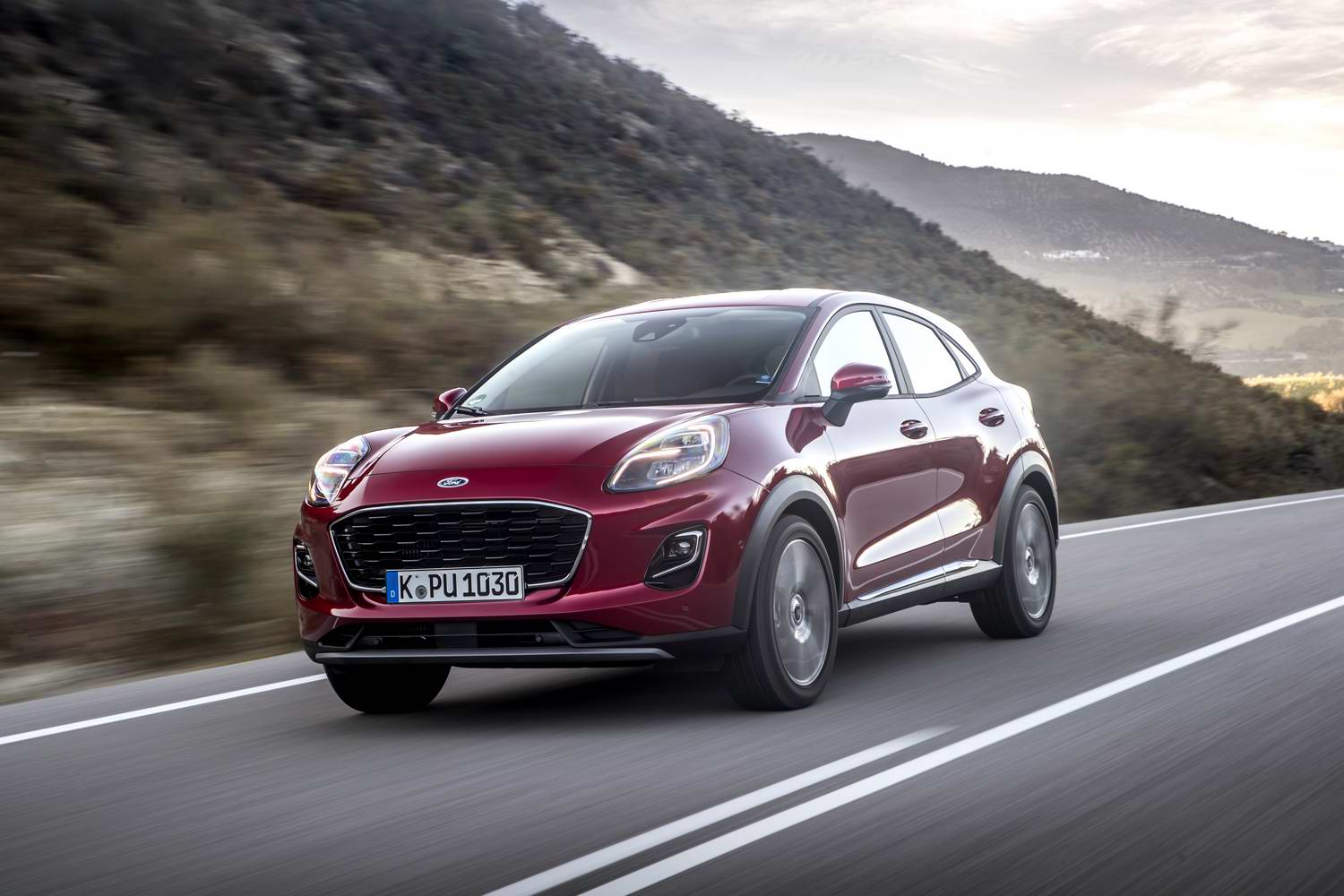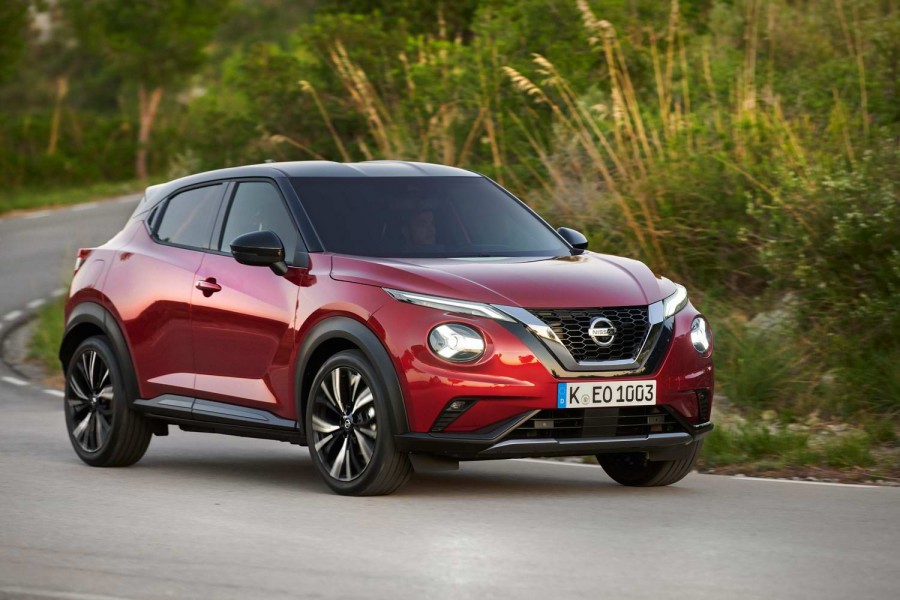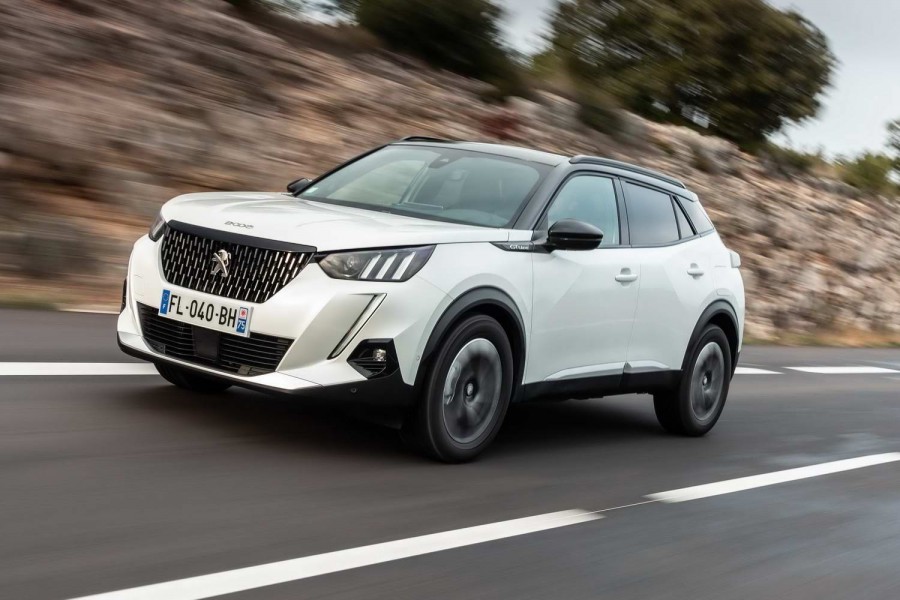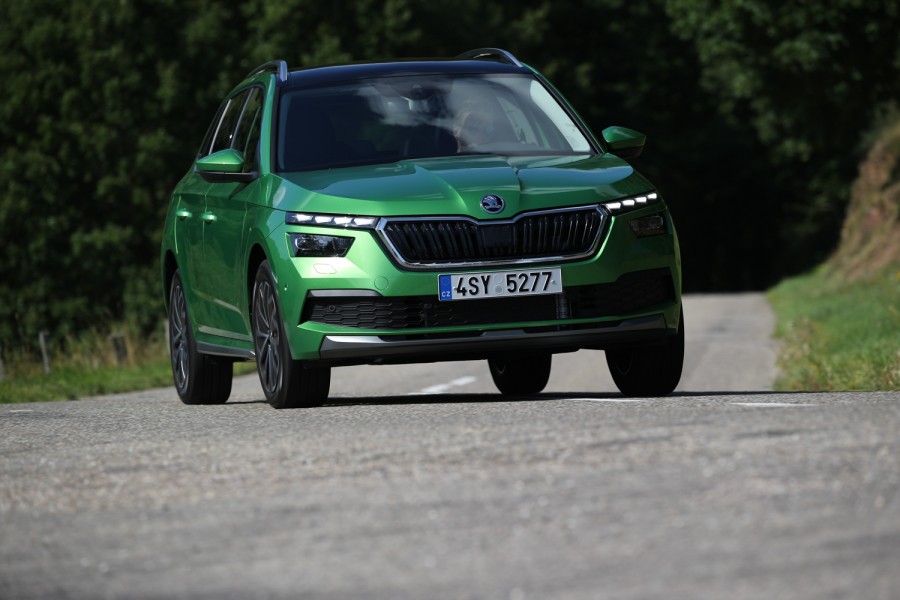Ford resurrects the Puma nameplate after a 19-year hiatus on this Fiesta-based crossover and, while it might annoy some purists that the big cat is no longer a sports car, the new Puma is a practical, well-made, generously equipped, keenly priced, sharp-driving machine that should find a whole new fanbase in the 2020s.
In the metal
It's not the fact this Ford Puma isn't a coupe that bothers us; it's more that the front-end aesthetic is somewhat awkward. Ford's designers have done a mostly good job on the Puma, which is larger in every key dimension compared to the Fiesta it's based on, and we like the rear three-quarter view and the flowing design lines on the flanks very much. But, at the nose of the vehicle, those large, high-mounted headlights not only further the suspicion in your mind that you're looking at a miniaturised Kia Sportage, they couple with the strange 'optimistic grille' (Ford's words, not ours) to create a rather bemused-looking face for the crossover. It's not ugly, per se, but we can readily think of several more attractive creations that are available elsewhere in this class.
Still, you might adore the exterior looks, which means you'll be in an even better mood than we were by the time we got into the cabin - and this is undoubtedly the Puma's first big-hitting weapon in the compact crossover war for customers. The quality of the fixtures and fittings is as good as anything else in this segment, and while the fascia design can look a bit plain and charcoal-grey in the Titanium model (ST-Line cars get sportier seats and carbon-effect trim to significantly lift the ambience), it is nevertheless laid out in an intelligent fashion. It also has some eye-catching touches, such as a 12.3-inch Digital Cluster in front of the driver (see 'What You Get For Your Money', below) and SYNC 3 infotainment on a dash-top touchscreen, although we would like the driving position of the Titanium to be a bit lower relative to the car's body; you always feel like you're perched on it, rather than sat in it. The ST-Line remedies this to a degree by having bucket-type front seats.
It's not only the quality of the Puma's interior that impresses, however, but also the practicality. Rear-seat space is decent, there are plenty of big storage bins up front and then, at the back, is arguably the car's party piece - its boot. Measuring 456 litres with all five seats in play, 80 litres of the overall amount are made up of a rubberised under-floor storage cubby called the MegaBox. This thing is fantastic - it's big enough to take a couple of decent-sized bags if you need it to, but it's also designed to accommodate wet and muddy items (like kids' wellies after they've been on the beach, for instance). And then, when you've taken said messy things out of the MegaBox, you can hose it down and release the water through a drain plug at the bottom of it. Alternatively, items up to 1,143mm tall can stand in the boot if the MegaBox is in use, as the two-level boot floor is neatly designed to stand upright out of the way in this instance, and even the luggage cover is cleverly designed too - it's mounted to the boot hatch itself, rather than behind the seats in the C-pillars, so it doesn't need to be faffed about with in order to load bulkier cargo.
Driving it
A solitary three-cylinder 1.0-litre EcoBoost petrol turbo engine is available in the Puma for now, with mild-hybrid electrical assistance making it into an MHEV: namely, a belt-integrated starter generator (BISG) in the transmission powered by a 10Ah, 48-volt lithium-ion battery mounted behind the rear seats. This powertrain comes with either 125hp and an MHEV-boosted peak of 210Nm, or 155hp and an MHEV-boosted maximum of 240Nm. It's mated to a six-speed manual gearbox and front-wheel drive, so the Puma is most emphatically a crossover rather than an SUV.
It's also, dynamically speaking, absolutely miles and miles ahead of Ford's previous B-segment crossover offering, the Indian-built EcoSport, which (oddly enough) will continue on sale alongside the Romanian-built Puma for a year or so yet. But if you go into a Ford dealership and try both the EcoSport and the Puma, then unless you're on the tightest of tight budgets there's surely only ever going to be one outcome: you'll be signing up for a Puma. This newcomer shows up just what a gap-filling rush-job the EcoSport has always been.
Based on the Fiesta, the Puma's wheel tracks have been widened by 58mm so they're as broad as those on the Focus. The Puma has a 95mm-longer wheelbase than the Fiesta, too, while its torsion-beam rear suspension has been rejigged to accommodate for the fact the crossover is a 54mm-taller, heavier machine; yet, even on this last score, it's not markedly portly overall, coming in with a reasonable 1,280kg kerb weight.
All of this adds up to a B-segment crossover that's easily the best thing to drive quickly in this segment, the SEAT Arona excepted. Keener drivers will be delighted to hear the Puma moves around an awful lot with throttle adjustments only, the rear axle proving to be quite lively in lower-grip situations. There's naturally more body roll, pitch and dive than you'd get on a supermini, but in the Puma it merely better serves to telegraph precisely where the limits of grip are. And those limits are high: understeer comes only with a lot of provocation, the Puma otherwise clinging on gamely in the bends to make the most of its pace. There's a bit of torque-steer to work around from time to time, this more noticeable on the 155hp version than the 125hp, and the steering has an odd self-centring springiness that otherwise lets down the excellent brakes and gearshift, but overall the Puma is great fun to drive quickly.
Thankfully, it's arguably even better on a day-to-day basis. The drivetrain is a little peach, smooth through the rev range and willingly eager, thanks to the torque infill and supplementation duties of the mild hybrid tech. The gearbox itself is a gem, operated by different gear knobs in the Titanium and ST-Line (we prefer the ergonomics of the ST-Line's item here, although it's not a deal-breaker in the Titanium by any stretch of the imagination), while the ride comfort and rolling refinement are both up there with the best in class. Factor in good visibility out in all directions and well-judged major controls, and what you have here is a compact crossover that excels not only in its favoured habitat of urbans areas, but also one that is excellent on both fast, major routes and challenging roads alike. If Ford decides to cook up an ST version of the Puma, it will be one cracking little fast crossover, no doubt about it...
What you get for your money
Ford Ireland is going to offer the Puma in three trims from launch, which are Titanium (from €24,299), ST-Line (from €25,899) and ST-Line X (from €27,699). As of writing, only the 125hp MHEV drivetrain is confirmed for these shores, meaning the 155hp derivative is not yet available. That means that therefore, the Puma has the most limited engine 'selection' you can get for a new car: there's only one. Later this year, a dual-clutch automatic gearbox and a diesel version will also come online, while there's a non-MHEV 125hp EcoBoost powertrain also potentially in the offing, but we think Ford needs to bring some extra options to the Puma's engine department sooner rather than later.
Nevertheless, the equipment levels are good. Titanium cars have black-plastic side claddings and bumpers, as opposed to the ST-Line Pumas' body-coloured look, while 17-inch alloys, massaging front seats, automatic high-beam, powered exterior mirrors with puddle lights, and a strong standard safety kit list are all part of the bundle on the entry-level cars. Sadly, however, the 12.3-inch Digital Cluster is only standard on the ST-Line, with the Titanium coming with an analogue dial pack instead.
Summary
Slightly elastic steering, unusual front-end looks and limited engine choice aside, there's little to dislike about the new Ford Puma. It's fun to drive, has a lovely drivetrain, rides with real big-car aplomb and it's notably practical, thanks to its big boot and the MegaBox. It might not be a coupe anymore, but the Puma Mk2 is still brilliant - and one of the best things in its class as a result.






















































